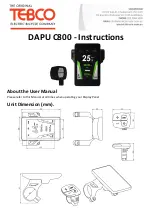
Exposure Compensation
At a close distance (at reproduction ratios 1:10 or greater), the amount of light reaching the film decreases as the lens-to-film distance increases.
When shooting without PL exposure metering (i.e., when performing non-TTL auto flash photography, or when using a separate exposure meter, etc.), make exposure
compensation while referring to the table below:
Lens Care
Clean lens surface with a blower brush. To remove dirt and smudges, use a soft, clean cotton cloth or lens tissue moistened with ethanol (alcohol) or lens cleaner. Wipe in a circular motion from center to outer edge,
taking care not to leave traces and not to touch the other lens parts.
Copyright-
free
images collection © 2001
Important Note
When using a separate exposure meter and setting the aperture according to value indicated in the camera's LCD panel or in the viewfinder LCD, there is no need to consider the exposure factor. Likewise, when
setting aperture value with the aperture dial of F-401 series cameras, the exposure compensation is unnecessary. However, when setting aperture with the aperture ring of the lens or according to value indicated in the viewfinder
Aperture Direct Readout window, make exposure compensation while referring to the table.
Technical
Specifications
:-
Type of lense
: D-type AF Micro Nikkor lens with built-in CPU and Nikon bayonet mount
Focal length
: 200mm
Maximum aperture
: f/4
Lens construction
: 13 elements in 8 groups
Picture angle
: 12°20'
Copyright-
free
images collection © 2001
Aperture scale:
f/4 to f/32 on both standard and aperture-direct-readout scales
Minimum aperture lock
: Provided
Diaphragm
: Fully automatic
Lens Coating
: Nikon new SIC (
Super Integrated Coating
)
Exposure measurement
: Via full-aperture method for AI cameras or cameras with CPU interface system, via stop-down method for other cameras
Mount
: Nikon bayonet mount
Attachment size
: 62mm (P=0.75mm)
Tripod mounting
: Built-in tripod mounting collar ratable through 360°
Standard accessories
: 62mm Snap-On front lens cap; Rear lens cap LF-1; Hard lens case CL 45
Optional Accessories
: 62mm screw-in filters, Screw-in lens hood HN-30, CL-M2 case.
Dimensions
: Approx. 76mm (3 inches) dia. x 1 93mm (7.6 inches) extension from the camera's lens mounting flange; overall length is approx. 202mm (8 inches)
Weight
: Approx. 1,200g (42.3 oz.)
Usable Tele-Converters
: - Nil (Nikon not advised to do so).
NOTE
: Production Serial Numbers believed to have started from 200001 for this AF lense
Relative
:
|
AF-D Micro 200mm f/4.0s IF-ED
|
AF-D Zoom Micro-Nikkor 70-180mm f/4.5-f/5.6 ED
|
AF-D Micro 105mm f/2.8s
|
AF-D Micro 60mn f/2.8s
|
PC-Micro-Nikkor 85mm f/2.8D
|
MF Micro-Nikkor 55mm
|
MF Micro-
Nikkor 105mm f/2.8
|
f/4.0
|
MF Micro-Nikkor 200mm f/4.0s IF
|
Other Nikkor prime of 180mm-200mm
Telephotos
|
Other Nikkor prime of 105mm
Telephotos
|
MF Medical-Nikkor 120mm f/4.0s
|
Medical-Nikkor 250mm
f/5.6
|
MF Bellow Nikkor 105mm f/4.0
|
Bellow-Nikkor 135mm f/4.0 preset
|
UV-Nikkor 55mm f/4.0
|
UV-Nikkor 105mm f/4.0s
|
BACK
|
to Index page of AF Micro-Nikkor 200mm f/4.0D ED-IF
Reproduction Ratio
Exposure Factor
Amount of Exposure compensation (approx.)
1:10
1.10
1/6 stop
1:8
1.12
1/6 stop
1:7
1.14
1/6 stop
1:6
1.16
1/6 stop
1:5
1.19
1/3 stop
1:4
1.24
1/3 stop
1:3
1.31
1/2 stop
1:2.5
1.37
1/2 stop
1:2
1.46
2/3 stop
1:1.8
1.51
2/3 stop
1:1.6
1.57
2/3 stop
1:1.4
1.65
2/3 stop
1:1.2
1.75
5/6 stop
1:1.1
1.82
5/6 stop
1:1
1.90
1 stop
Note
: To compensate exposure without increasing aperture more than one full f/stop, use slower shutter speeds. For example, for a 1:1.2 reproduction ratio, open the lens by 5/6
stop. Or use a shutter speed one step slower, then stop the lens down by 4/6 stop.
Never
use thinner or benzine
to clean the lens. To protect the
lens surface from dirt or damage, the use of an NC filter is
recommended at all times. The lens hood also helps to protect the
lens. Keep the lens cap in place whenever the lens is not in use. If
you will not use the lens for a long time, protect it from rust and
mold by storing it in a cool, dry place. Also, do not store in direct
sunlight, and keep it away from naphthalene or camphor.Be
careful not to get the lens wet or drop it in water. Water on the lens
may cause malfunction. Reinforced plastic is used on the exterior
of the lens unit; to avoid damage, take extra care to never leave
the lens in an excessively hot place.
Distance scale
: Graduated in meters and feet/inches from 0.5m
(15/8 ft.) to infinity (
OO
)
Distance information
: Output into camera body with CPU interface
system; Manual focus
Reproduction ratio
: 1:10 to 1:1 (life size)
Seite 3 von 3
AF Nikkor 200mm f/4D ED-IF Lens - Instruction Manual
05.01.2010
http://www.mir.com.my/rb/photography/companies/nikon/nikkoresources/AFNikkor/af200...





















